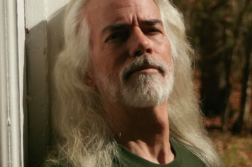 MARK ROEDER of Bloomington, Indiana, is the author of the “Gay Youth Chronicles,” a series of interrelated stories about gay youth coming of age in rural America over the span of fifty years. He has authored a total of nineteen novels. While the narratives reflect the improvement in living conditions for gay youths realized as a result of the GLBT civil rights movement, homophobia appears throughout the series as the defining challenge that successive generations must confront in learning to accept themselves and find love.
MARK ROEDER of Bloomington, Indiana, is the author of the “Gay Youth Chronicles,” a series of interrelated stories about gay youth coming of age in rural America over the span of fifty years. He has authored a total of nineteen novels. While the narratives reflect the improvement in living conditions for gay youths realized as a result of the GLBT civil rights movement, homophobia appears throughout the series as the defining challenge that successive generations must confront in learning to accept themselves and find love.
Roeder’s vivid and imaginative interpretations of homophobia, which is frequently personified allegorically, afford insight into the condition as a lived reality particularly for gay young people growing up in America’s heartland. His website is at www.markroeder.com.







